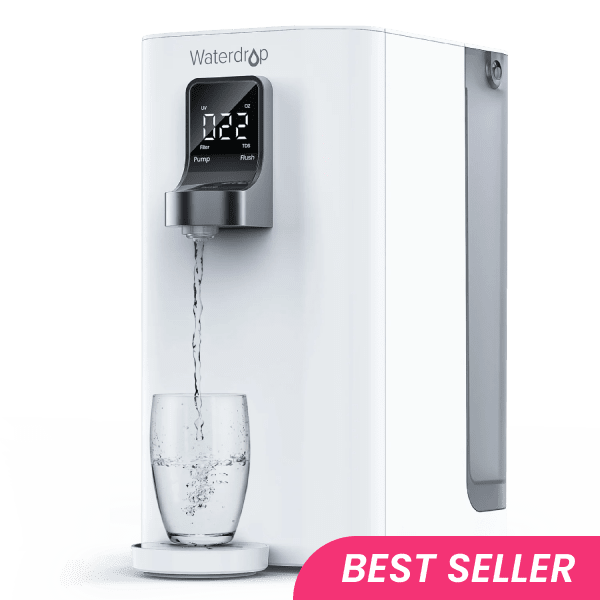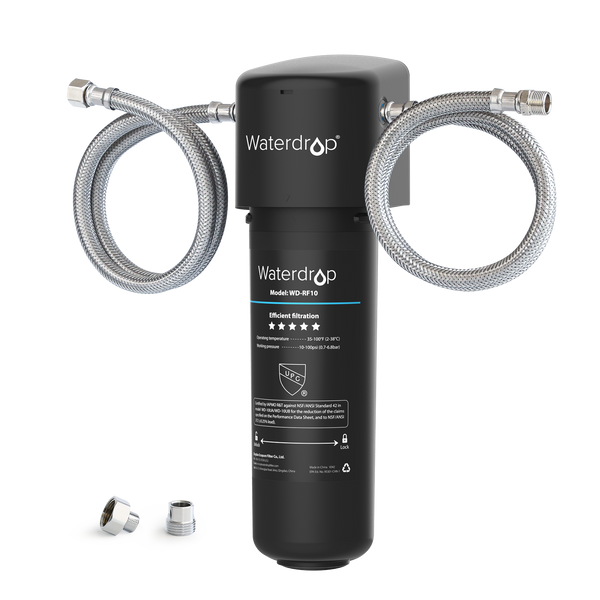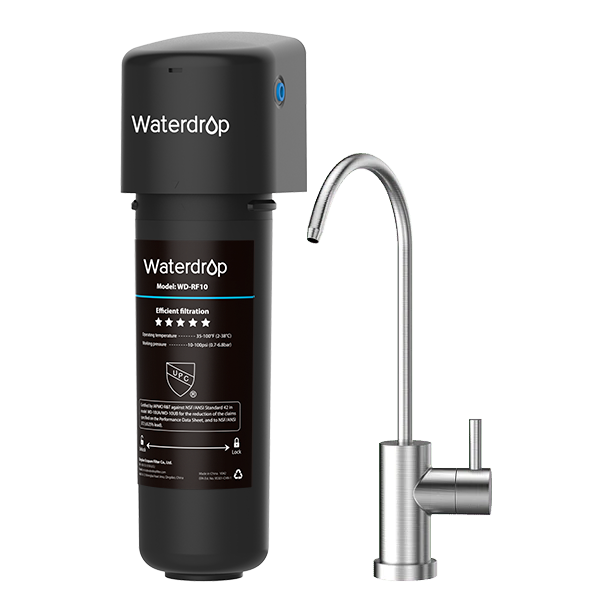Wildfires in California Raise Health Concerns over Contaminated Water
by Dr. Jonathan Doyle - Updated October 17, 2020
Wildfire leads to water contamination in California. Learn how to remove benzene and other toxic chemicals in the local water supply after wildfires.
Table of Contents
"The water smelled like diesel,” Gerald Buhrz, 77, said. "It smelled like you could probably light it with a match."
This is a quote by a resident who lives in Santa Rosa, California.
Luckily, the residents can detect the awful odor in water and report timely. Most of the time, chemicals dissolved in the drinking water after wildfires without a smell showing they're harmful. Benzene, for example, is a colorless chemical found in gasoline fumes, burnt wood, and plastic smoke. This chemical compound can quickly evaporate into the air and easily dissolve in water.
During and after wildfires, exposure to benzene can occur either by drinking water, inhaling it when water is boiled for cooking, or during showers, when it might also get absorbed through the skin. In the short-term, benzene exposure is associated with a bout of light-headedness or nausea — but prolonged exposure is tied to increased cancer risk.
According to a recent study by Purdue University, fires can cause water contamination with chemicals being released through plastic pipes. When fires heat up, the water distribution systems can be easily damaged and depressurized to suck smoke and chemical pollutants. Some water system plastics decomposed and leached chemicals directly into the water. Toxic chemicals then spread throughout pipe networks and into buildings.

A San Lorenzo Valley Water District staff member stands next to the remains of a plastic water supply pipe that melted during the CZU Lightning Complex Fire. Photo courtesy of SLVWD
In the 2017 Tubbs Fire and 2018 Camp Fire, chemical contamination was discovered in the water distribution network and not in the source water after the fire. The Water pipes that were buried underground and inside of buildings were extensively contaminated. Both fires destroyed fire hydrants, water pipes, and meter boxes.
After the fires passed, testing revealed widespread hazardous drinking water contamination in areas affected by both fires. Evidence shows that the toxic chemicals were from a combination of burning vegetation, structures, and plastic materials.
The drinking water exceeded state and federal government-defined exposure limits for several volatile organic compounds (VOC) contaminants(e.g., benzene at 40,000 g/L [Tubbs] and >2,217 g/L [Camp]) in both of the disasters.
The water inside home was not safe to use, or even to treat.
There are only limited water testing by state and local agencies showed that benzene and naphthalene were present at levels that could cause immediate physical harm. These chemicals, as well as methylene chloride, styrene, toluene, and vinyl chloride, exceeded limits for longer-term exposure.
All of these substances are volatile organic compounds – chemicals that readily evaporate into the air at room temperature. Many of them cause cancer. All can cause vomiting, diarrhea, and nausea after a brief high-concentration exposure.
The county of Santa Rosa, CA, issued a boil water advisory for the 13 homes left standing in the area most impacted by the fire. However, is boiling water the right treatment? The study suggests that heating water for showers or cooking makes the toxic chemicals enter the air even faster, creating a more severe inhalation risk. Some of the chemicals can also be absorbed through the skin.
The question now is — how can these toxic chemicals be removed from our drinking water?

The answer: through an NSF certified benzene water filter.
The solutions:
- Granular activated carbon water filter
- Reverse osmosis water filter
Granular activated carbon water filter
The granular activated carbon water filter is one of the most popular water treatments for benzene removal. The working scheme is to trap the contaminants in the water when passing through the filter. The internal carbon structure will absorb the benzene and deliver a clean stream of water. It is simple and very cost-effective. You only need to replace the filter when it exhausts.
Reverse osmosis water filter
Another great option for benzene removal from water would be the Reverse Osmosis (RO) system. The system filters out benzene through a semi-permeable membrane with a pore of 0.0001 micron. Compared to other water filtration systems and options, reverse osmosis is a better method of providing clean and pure drinking water for households. It is arguably the most efficient water purification technology out there, capable of removing toxins and dissolved salts in water. The reverse osmosis water filtration system is known to eliminate 99% of contaminants found in water. These include:
- Chlorine and fluorine
- Lead, arsenic, chromium, radium, barium, cadmium
- Salts – Nitrates, sulphates, and others
- Sediments, dirt, and rust
- Heavy metals
- Parasites
- Volatile organic compounds (VOCs)
- Herbicides and pesticides
- Total dissolved solids(TDS)
- It also improves the taste of water while removing odor and color.
During challenging times like we are going through, drinking water's safety is no longer something we can take granted. It is necessary to have a reliable water supply at home, and the water we access must be safe, clean, and healthy.
Reference:
Contaminants Detected in Fruitland Water Special Service District
30
Contaminants
EXCEED EWG HEALTH GUIDELINES
EXCEED EWG HEALTH GUIDELINES
30 Total Contaminants in Your Water
Water Provider
Fruitland Water Special Service DistrictPopulation Affected
120,000Water Source
Ground waterExceeds Guidelines
Others Detected















